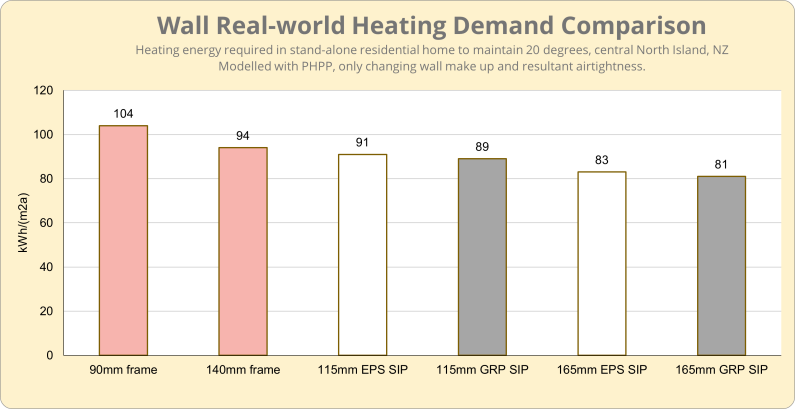Are you getting much of a thermal upgrade using 140mm vs 90mm timber wall framing?

When it comes to building a warmer, more energy-efficient home, many homeowners naturally assume that upgrading from 90mm to 140mm timber framing is a major improvement. While this seems logical, how much thermal performance do you actually gain?
In this article, we’ll explore whether the jump from 90mm to 140mm framing offers as big of a boost as you might expect, and what alternatives could offer a more significant energy-saving benefit.
The Marginal Gains of 140mm Timber Framing
140mm framing accommodates thicker insulation, but the increase in thermal performance isn’t as large as many expect. This is because timber itself acts as a thermal bridge, conducting heat through the wall and reducing the overall insulation effect. The more timber there is in the wall, the more heat escapes, which limits the insulation's impact, regardless of how thick it is.
When compared to 90mm framing, the improvement in thermal resistance from 140mm framing is minor. The increased timber content in the wall continues to conduct heat, offsetting the gains from the additional insulation
Real-World Heating Demand Comparison
We modeled the heating demand for a typical home, using PHPP software, and only varied the wall construction type. The results clearly show how limited the improvements are when switching from 90mm to 140mm timber framing compared to the substantial gains from using SIPs. Here's the breakdown:
- 90mm Timber Frame: 104 kWh/m²a
- 140mm Timber Frame: 94 kWh/m²a (a 9.6% improvement over 90mm)
- 115mm EPS SIP: 91 kWh/m²a
- 165mm EPS SIP: 83 kWh/m²a
- 165mm GRP SIP: 81 kWh/m²a (a 22.1% improvement over 90mm)
The switch from 90mm Timber Frame to 165mm GRP SIP leads to a dramatic 22.1% reduction in heating demand, dropping from 104 kWh/m²a to 81 kWh/m²a. In comparison, upgrading to 140mm timber framing provides only a 9.6% improvement
Making the Case for SIPs vs 90mm or 140mm Timber Framing
The reason for SIPs' superior performance is simple: they eliminate most thermal bridging. SIPs are made from a continuous insulation core sandwiched between two structural skins. This design prevents the kind of heat transfer that occurs in timber-framed walls, where the timber creates channels for heat to escape.
With SIPs, you not only get better insulation, but you also achieve it in a thinner wall. For instance, the 115mm Formance SIP outperforms a 140mm timber frame while using less space
SIP Walls are Just the start
Upgrading to 140mm timber framing might seem like a logical way to boost your home's thermal performance, but the gains are modest at best. For those seeking true energy efficiency and reduced heating costs, SIPs offer a far better solution.
Not only do they outperform timber framing in terms of thermal performance, but they also allow for thinner walls, freeing up more usable space in your home. If you're serious about creating a comfortable, energy-efficient home.
But it doesn't need to stop there; for a huge boost in energy efficiency complete the building envelope with a SIP roof, as well as the walls, and truly feel the difference.






